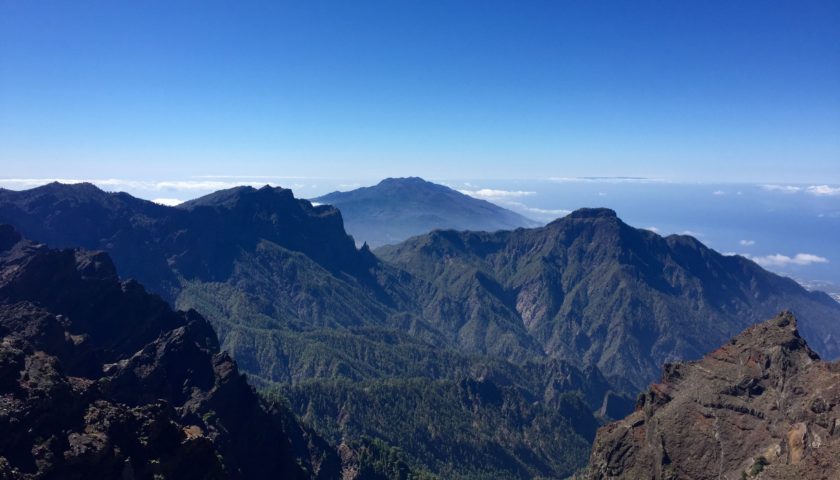This is a guest post about La Palma by Sam Whiteside, Port Presenter with P&O Cruises. You can find out more about Sam at the end of this article.
When you think of cruising to the Canary Islands, most people will imagine docking in Tenerife or Gran Canaria for sun, sea and sand. Many would never consider visiting La Palma on a cruise.
You might associate the name La Palma with the capital of the Balearic Island of Majorca, Palma. However it’s actually the fifth largest of the seven Canary Islands and is a real treasure. Its nickname ‘La Isla Bonita’ – the Beautiful Island – is a true testament to the sheer abundance of jaw dropping natural wonders that can be uncovered.
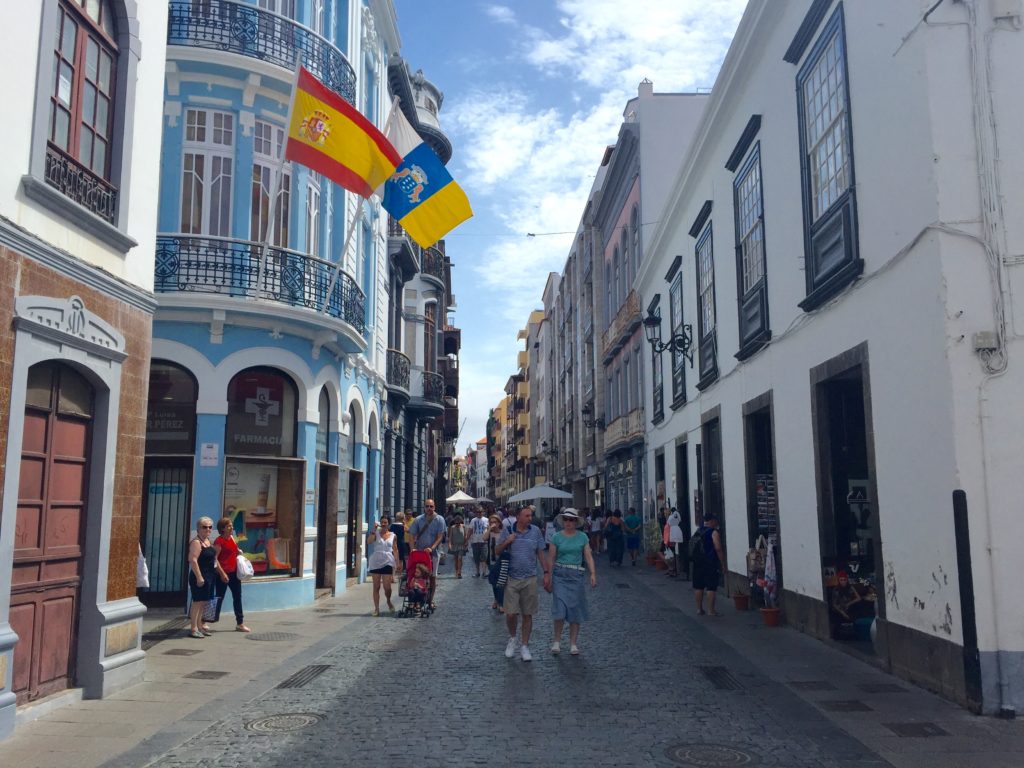
At 706 square km, La Palma is easy to explore in a day from a cruise ship. When docking in this rather sleepy port, it’s immediately evident that ships visit for the natural beauty. Sailing in to La Palma is impressive, with mountains rising up over 2,000 metres. In fact the Roque de Los Muchachos – Rock of Boys – at 4,246 metres above sea level, is second in height only to Mount Teide on neighbouring Tenerife, within the island chain.
Santa Cruz de la Palma
La Palma is not the typical Canary Island holiday destination. The port at Santa Cruz de La Palma acts as a gateway to the island, but it’s also a pretty town to stroll around. You will find a colonial style of architecture that is very different to other, overdeveloped ports in the Canary Islands.
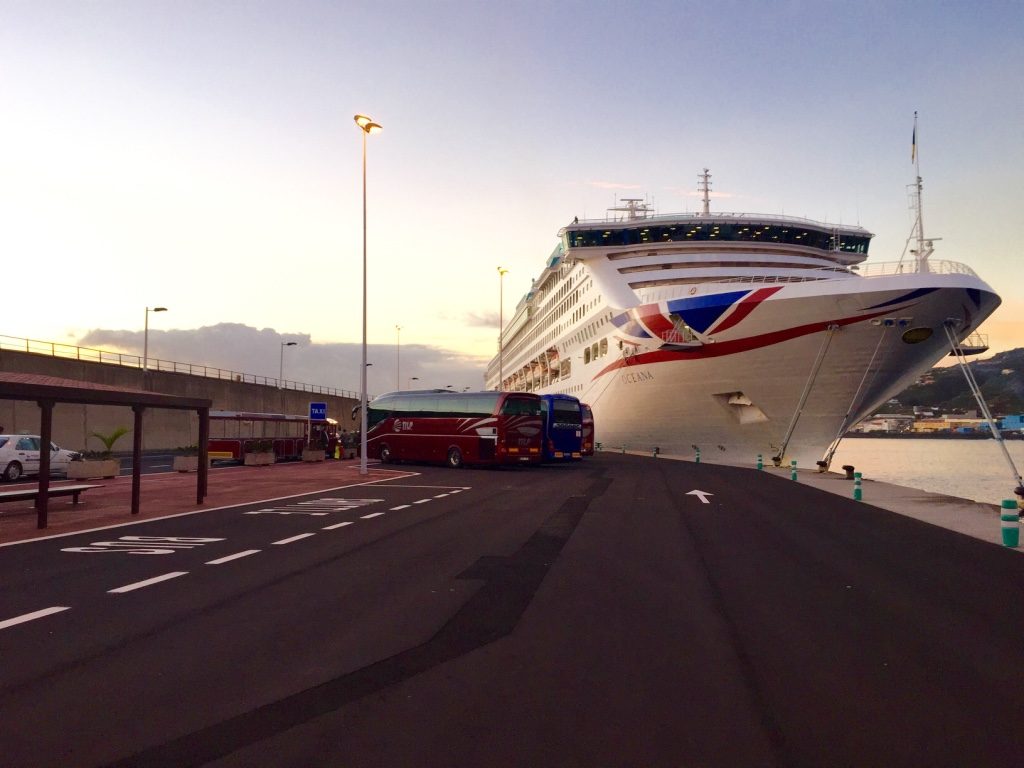
The port area is easy to navigate. There is a flat walk of approximately 1km to the start of the main pedestrianised street Calle O’Daly. This street is a mixture of cobblestones and paving slabs, and all along its length you will find an assortment of local souvenir shops, clothing stores, shoe shops, small cafés and bars. About half way up the street you come to the Plaza Espana, home to the Renaissance Town Hall and the Church of El Salvador.
If you continue along the street it passes more local shops and restaurants, which tend to be more laid back in their opening hours. They also observe a siesta time in the early afternoon. The restaurants serve up traditional Canarian meals such as grilled octopus salad, prawns infused with garlic and, of course, wrinkly Canarian potatoes with traditional Mojo sauce.
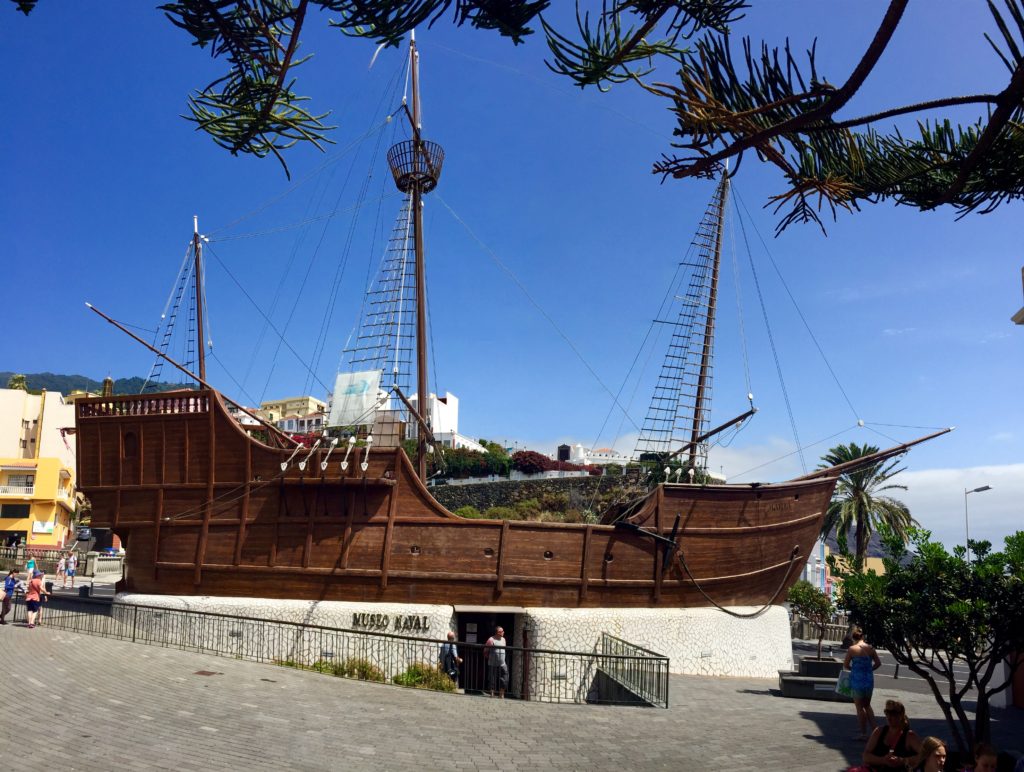
Other highlights in the town centre include the Plaza de la Alameda, along Calle Anselmo Perez. Here you will find the Museo Naval, housed in a concrete reconstruction of Santa Maria. This was the flagship of Christopher Columbus when he sailed to, and discovered, the New World in 1492 (Open Monday-Friday 10AM-6PM, Saturday-Sunday 10AM-2PM, €4.50 per person).
You may also want to explore the street parallel to Calle O’Daly next to the waterfront, the Avenida Maritima. Here sit the most impressive set of traditional 18th and 19th century wooden balconies in all of the Canary Islands. This is definitely something not to be missed on any stroll around Santa Cruz.
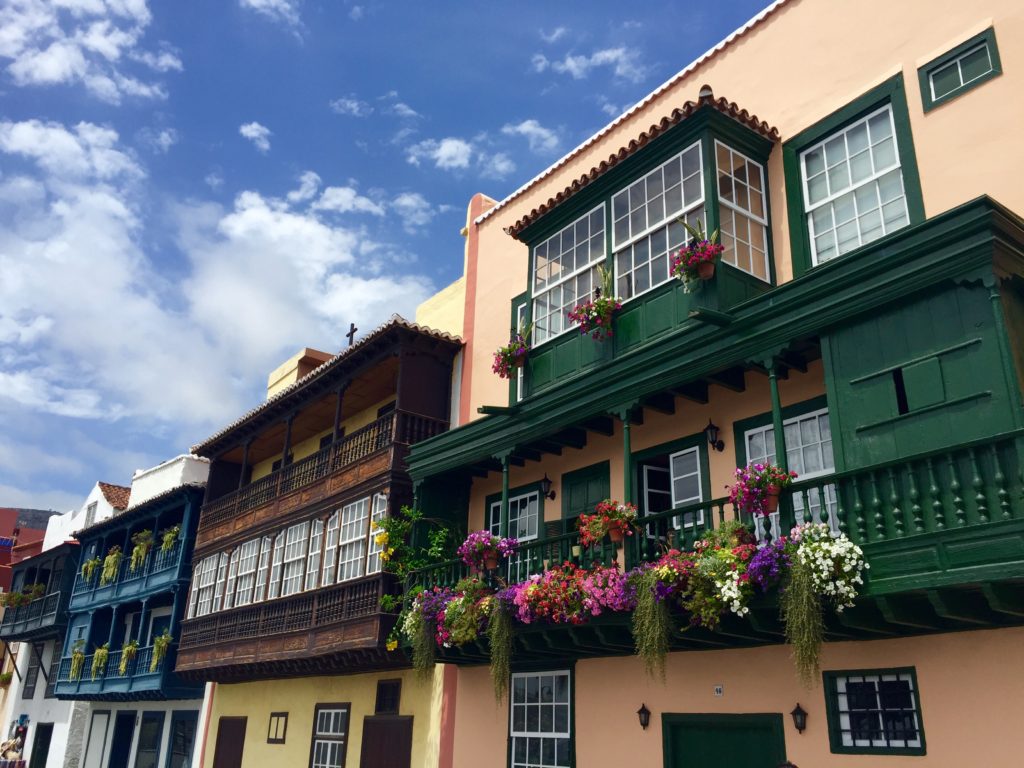
Beaches
La Palma is not renowned for its beaches and, being a volcanic island, most have black sand. Santa Cruz de La Palma has been working on its main town beach for as long as I can remember and it is finally open to the public. It is simple to get to from the ship and is close to all the amenities of town. It is also lifeguard patrolled in the summer.
You can also visit Playa de Bajamar, a black sand beach that lies directly opposite the main cruise ship berth. It is around a 20 minute walk from the port. This beach is sheltered from the rough Atlantic waves by the breakwater of the cruise pier, so it is a relaxing place to swim. There are some changing facilities and also a small pop-up bar, which sells snacks and drinks. On weekends it is popular with locals.
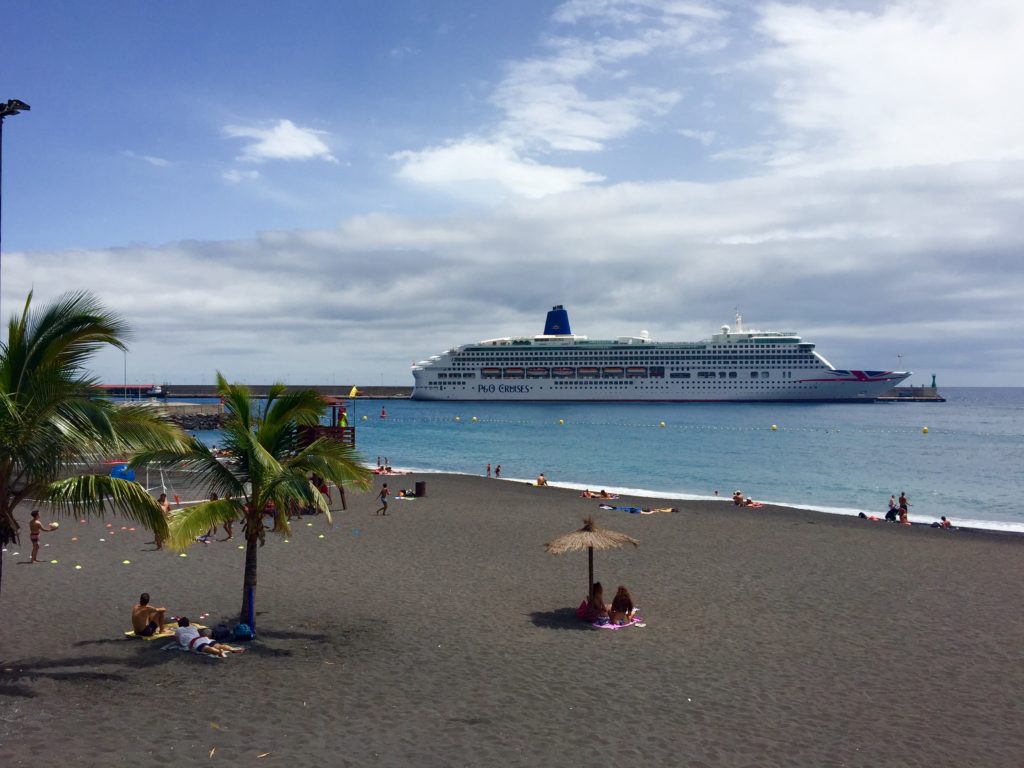
These are the main things to see in Santa Cruz de La Palma. In reality the town can be explored in 2 hours. Most people I speak to think that La Palma is not as interesting as the other Canary Islands and if I ask them if they have ventured further than the town, most will say no. This is a shame because, as I mentioned before, the port is a gateway to the wonderful natural beauty of the island.
Renting a car is a great way of exploring the island independently. There are a couple of firms in the small terminal building in the port, offering rentals from as low as €35 for a car for a whole day. Alternatively there are always cruise ship excursions with a guide.
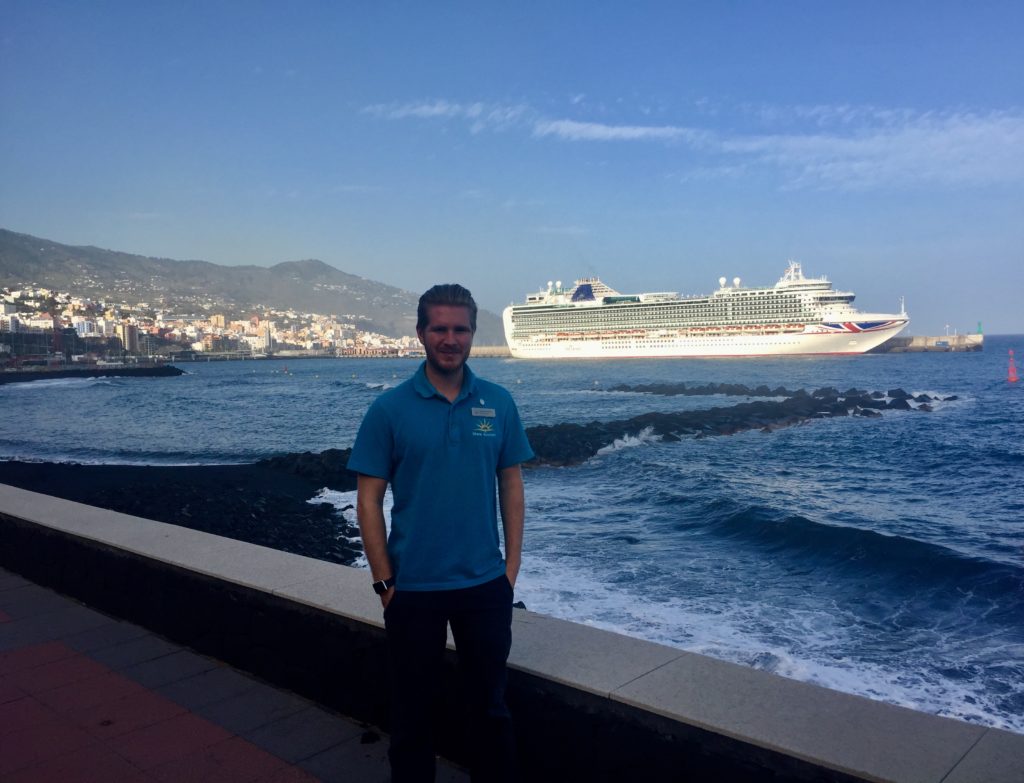
So if you are an intrepid explorer, here are some things not to be missed on La Palma:
Caldera de Taburiente National Park
The main highlight of the island lies right at its heart. Formed around 2 million years ago, the caldera is around 10 km across, and in places the walls tower 2000m over the caldera floor.
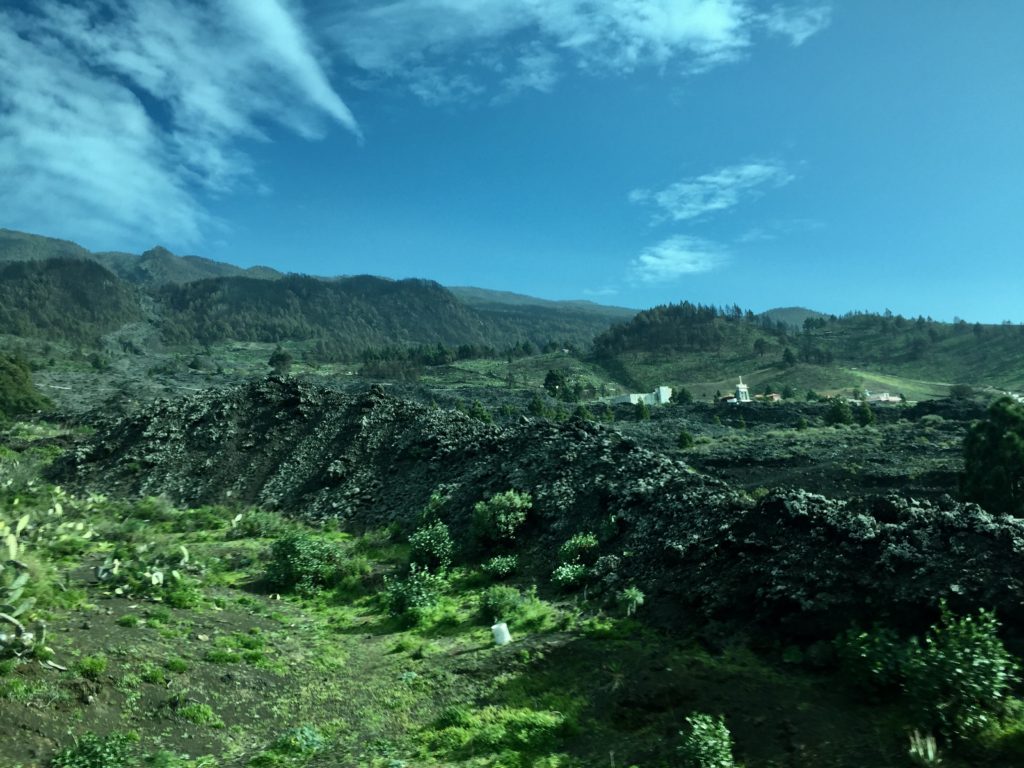
The main place to experience the caldera in all its glory is the La Cumbrecita viewpoint. It’s located at the end of a narrow valley that opens up over the edge of the crater. Waterfalls of cloud ascend or descend over this area designated by UNESCO as a Biosphere Reserve. There are several walking trails around to various other viewpoints, which can all be viewed prior to entry into the national park at the welcome centre in El Paso.
If you are thinking of visiting independently and have your own transport, then you need to reserve a space in the car park located at the La Cumbrecita viewpoint, which is extremely limited. The minimum time spent at the park is 30 minutes, but to fully appreciate the viewpoint and its trails, 1-2 hours is recommended. If taking a taxi from the port, you can expect to pay around €60 for a 2 hour tour.
El Paso
El Paso is a small town and municipality located at the centre of the island. It is the starting point for explorations of the Caldera de Taburiente, but it also has a couple of interesting and unusual attractions of its own.
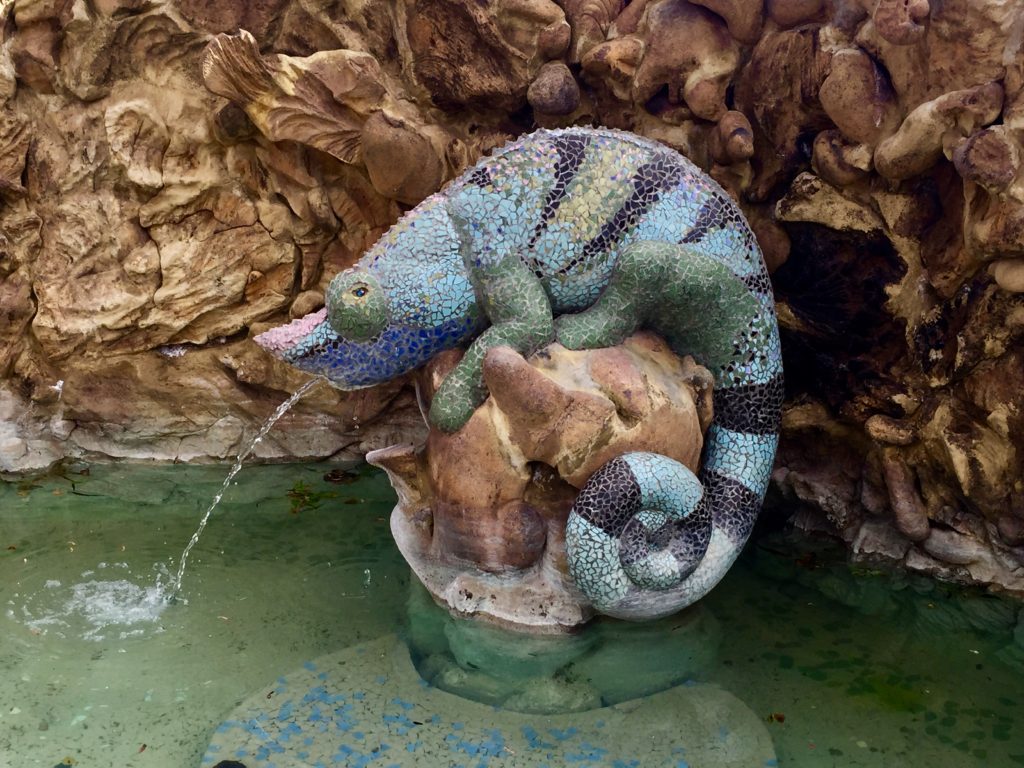
In the heart of the town you can find the Museo de la Seda, the only place left in the Canary Islands where the traditional method of weaving silk is still practiced. The ladies that make the silk are on hand to take you through the processes and can demonstrate exactly how they produce wonderful threads and colours using only natural products. The silks are so good, that world renowned fashion and shoe designer Manolo Blahnik, a La Palma native, uses them in his stunning creations. The museum is open Monday-Friday from 10AM-2PM, priced at €3 per person for entrance.
If you venture out of the centre of El Paso, you will find the unusual sight of La Glorieta Square. Designed by local Luis Morera, it is one of the most emblematic sites of the island. It is made up of thousands of coloured mosaic tiles, surrounded by natural lava stone walls and various vegetation formed from cement. It is an open park with no admission fee and offers great views over the west coast. Hopefully when you visit the sun is shining so that it enhances all of the fantastic colours.

Roque de Los Muchachos
La Palma is of particular importance in terms of world astrophysics. The highest point of the island is the location of the second most important astrophysics observatory in the world, and the principal northern hemisphere observatory. With no industry, meaning no pollution and very clear skies, the island is the ideal location for researchers from various nations.
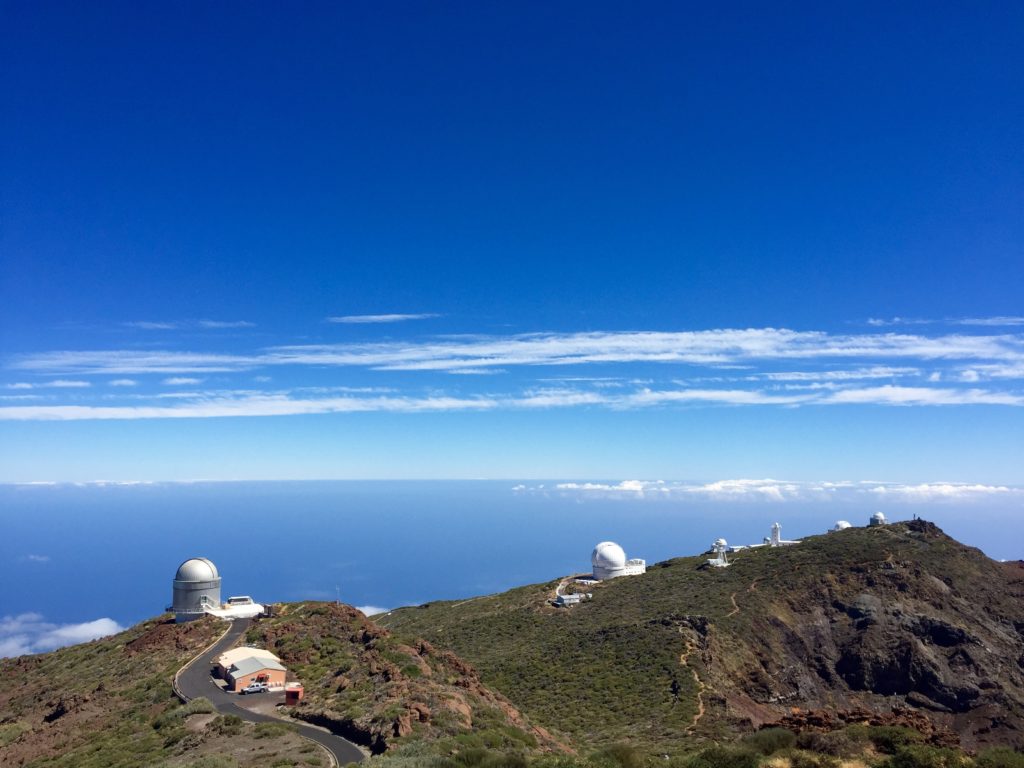
You can book private visits of the observatory online. It will be possible to visit the observatory every day of the week from 15th June to 15th September. The rest of the year the available days for visit are Tuesdays, Fridays, Saturdays and Sundays and are at designated times, usually in the morning.
The price of a visit is €9 per person, but you would also have to get to the observatory privately, which in a taxi would cost around €90. If you do not fancy visiting the observatory, then just admiring the view from the various viewpoints and the trail at the highest point is enough to take tour breath away, trust me.
Fuencaliente
Located at the southern end of La Palma, Fuencaliente is a landscape that is dominated by the volcanic ridge of Cumbre Vieja. This ridge is an active but dormant volcano. This area is popular for hikes along the various trails around the craters and for stunning views over the Martian like landscape.
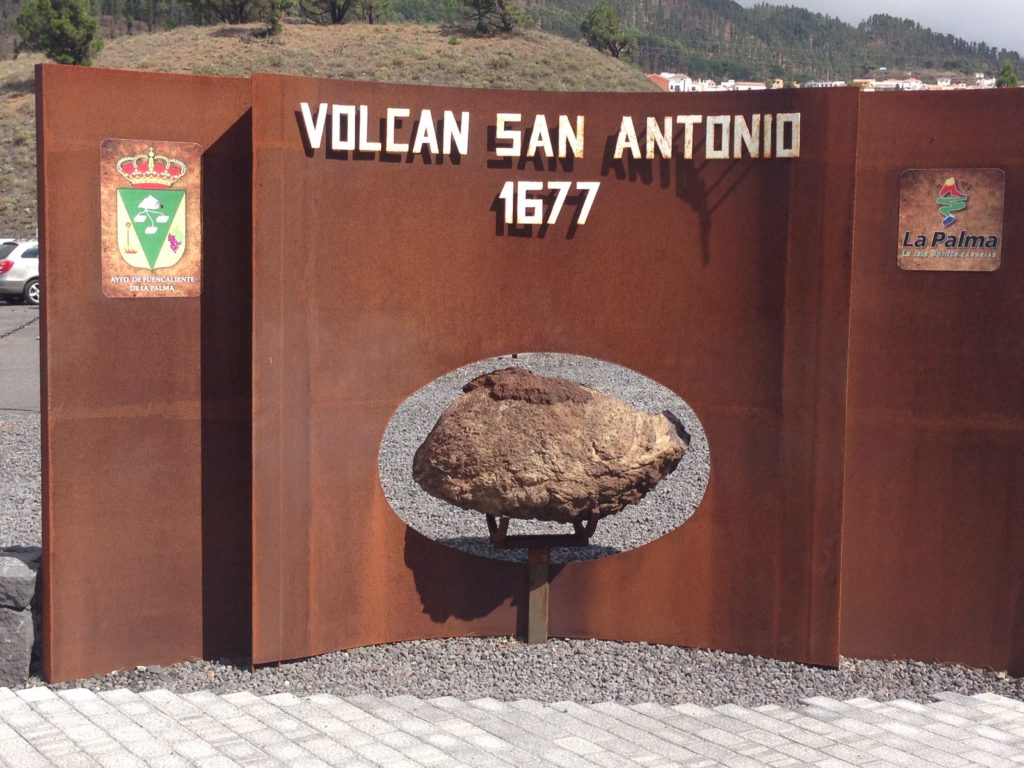
One of the main places to head to is the San Antonio Volcano, which has a visitor centre. You can also walk around the rim of this dormant volcano that last erupted in the 17th century. The volcano is very accessible and you simply make your way through the visitor centre, walk up an ash path and you are on its rim. This walk affords exceptional views towards the Teneguia vent and down towards the southern tip of the island.
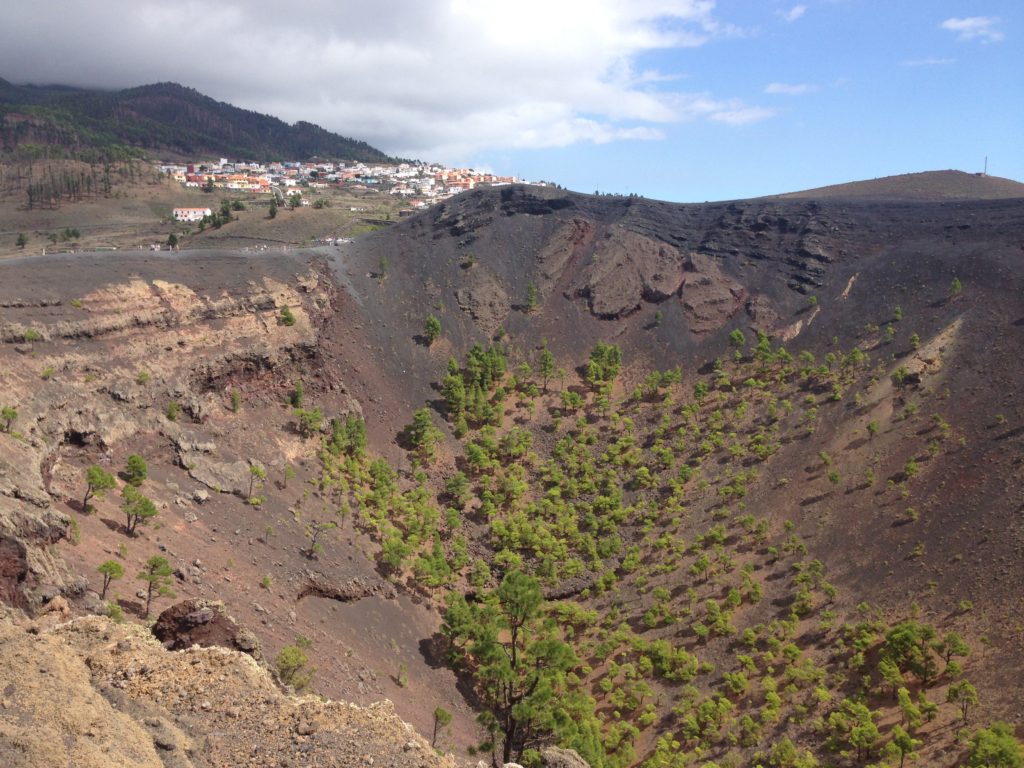
To access the welcome centre and walk around the edge of the San Antonio crater, a small entrance fee of €3.50 applies and the area is open daily from 9AM. A taxi down to Fuencaliente from Santa Cruz de La Palma will cost around €60 for 2 hours.
Los Tilos Laurel Forest
As a biosphere reserve, La Palma boasts some amazing hiking trails through stunning ecosystems, with over 1,000km of designated hiking routes. One of the most important is 24km to the north east of the capital – the Los Tilos Laurel Forest. There is an interpretation centre on arrival where you can learn more about the flora and fauna that can be found within the forest.
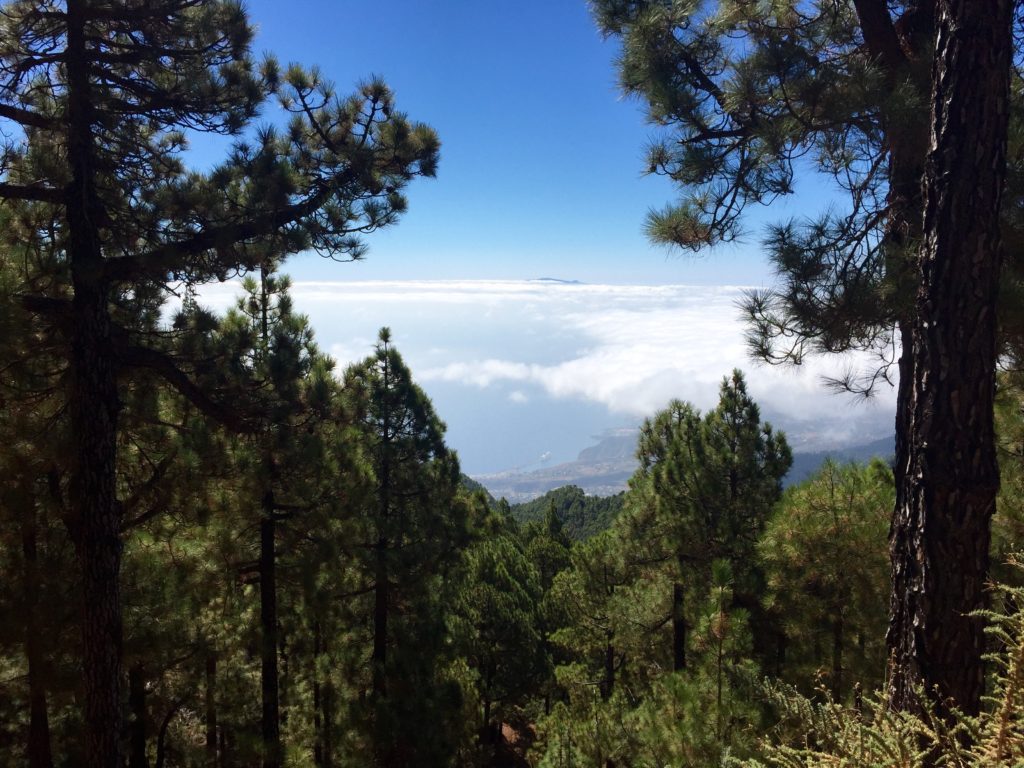
Admission is free and the centre is open from 9AM-6:30PM daily. From here you can enter the forest. There are some excellent self-guided walks to choose from. One is 2.5 km long, which takes you around the heart of the forest, while the other climbs up 1,000 metres until you reach the refreshing springs of Marcos and Cordero.
You can probably see that La Palma should never be overlooked or underestimated. It has a wealth of beautiful scenery and is an island that requires you to be active and appreciative of the natural side of tourism. I hope that by reading this, more people will be attracted to this beautiful Island and consider it more often when booking their cruise to the Canary Islands.
You will find a range of destination information to help with your cruise planning, on the Port Guides section of this website.
About Sam
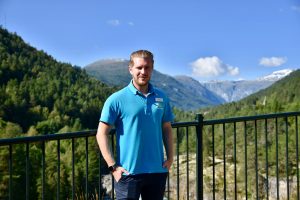 Sam Whiteside grew up by the seaside in Lowestoft, Suffolk but ended up working at sea by chance after a discussion at university with a professor. Having spent his entire ship career in the Shore Excursions department, Sam is currently a Port Presenter with P&O Cruises where he has been for 5 years. He has worked on all the ships in the current fleet.
Sam Whiteside grew up by the seaside in Lowestoft, Suffolk but ended up working at sea by chance after a discussion at university with a professor. Having spent his entire ship career in the Shore Excursions department, Sam is currently a Port Presenter with P&O Cruises where he has been for 5 years. He has worked on all the ships in the current fleet.
Sam loves getting out and exploring all the destinations that he visits on cruises and is always excited to try new things and expand his knowledge of the ports. He has recently invested in a new passion of amateur photography, which is great in his job because he has the perfect material to work with on a daily basis. Sam doesn’t have a favourite destination. He finds they all have something special about them, but destinations he enjoys visiting regularly include the Baltic and the Central Mediterranean.
You can follow Sam’s travels on Instagram at iamsailorsam.
Follow me on social media

